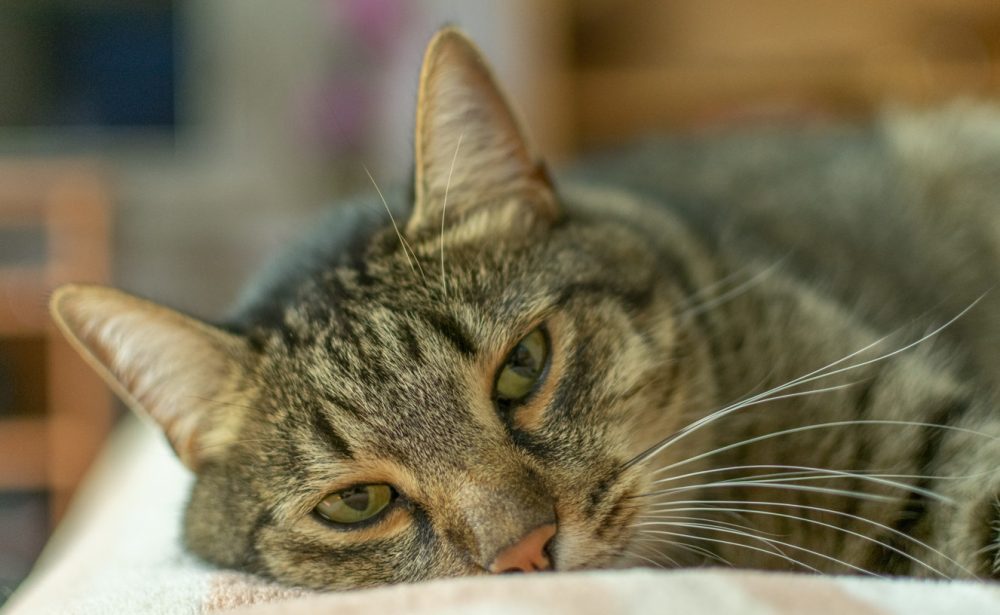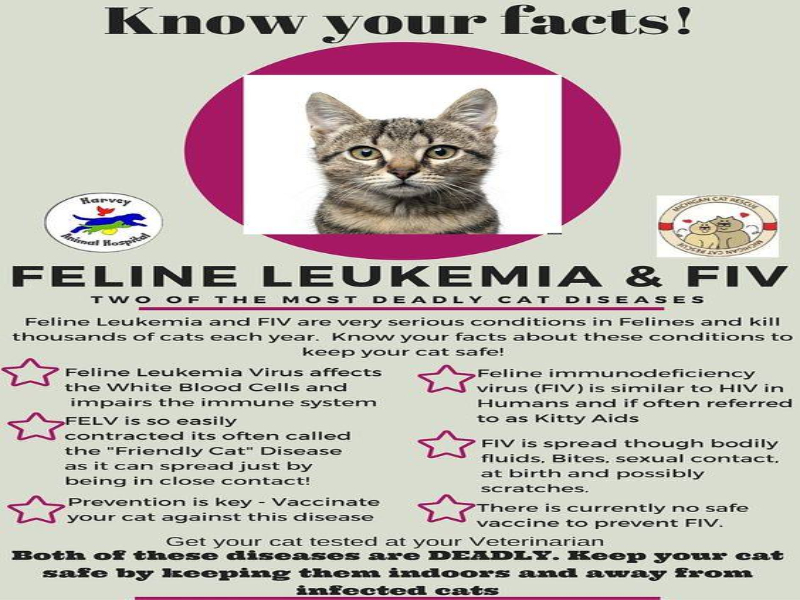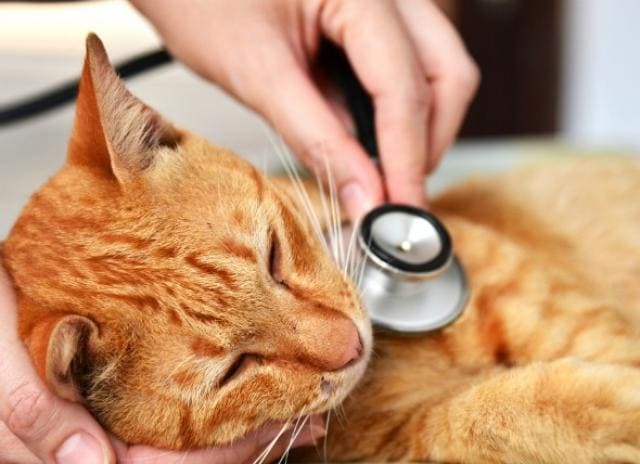Table Of Content

Twice-yearly physical examinations, laboratory testing, and parasite control can prevent complications and identify problems quickly. Feline leukemia virus is transmitted between cats via infected saliva and urine. Direct contact with these body fluids, mutual grooming, shared litter boxes and food dishes, and fighting (bite wounds) all expose uninfected cats to the virus. To become infected, cats typically require prolonged, repeated exposure to the virus.

Treatment and Prevention
With any virus, including FeLV, the immune system stops working, and your cat's overall health begins to deteriorate. They may show signs of listlessness, sleepiness, and overall weakness. Aggressive feline cancer treatment includes surgery in which tumors can be removed if not too large, and chemotherapy and radiation treatment. As with any treatment of an aggressive disease, the sooner that it is detected, the better the chances of a recovery. And owners should be aware that while the treatments described above can have effective results if the cancer is caught early enough, they also can cause injury and toxic side effects.
thoughts on “Hair Loss in Cats: Causes, Symptoms, & Treatment”
Cat Cancer Signs & Symptoms: What Most Owners Miss - Parade Pets
Cat Cancer Signs & Symptoms: What Most Owners Miss.
Posted: Fri, 15 Sep 2023 07:00:00 GMT [source]
See your veterinarian immediately if you notice any sign of infection or illness, because treatments should be started as soon as possible. If your cat tests positive for feline leukemia virus, it is important to limit its exposure to secondary infections. It is best that she remains indoors only and does not have access to other cats that may have spreadable diseases. Any illness, no matter how small, is a threat to a compromised immune system. Vaccination for FeLV is available, and although it will not protect 100% of cats vaccinated, it is recommended to reduce the risk of FeLV infection for cats at risk of exposure, such as indoor/outdoor cats.

How can I treat my cat’s hair loss?
Interferons (human and feline) are often used in retrovirus-infected cats as antivirals and immunomodulators. Unfortunately, well-designed studies using these drugs are lacking or have failed to show benefit. Two separate studies have shown some benefit from parenteral feline interferon omega; however, controlled studies using oral feline interferon omega have not been published. However, transmission can occur at any age, and factors affecting clinical course of disease are complex and incompletely understood. Sadly, many cats will eventually die from the disease or will require euthanasia due to poor quality of life and suffering. The average projected lifespan for FeLV-positive cats is approximately 2 to 3 years, but with adequate treatment from your veterinarian, these years can offer a good quality of life.
Cornell University College of Veterinary Medicine
ELISA-type tests detect the presence of free FeLV particles that are commonly found in the bloodstream during both the early and late stages of infection. After exposure to FeLV, a cat’s body can react to the virus in a few different ways, leading to abortive, regressive, or progressive infections. The leukemia virus puts cats at risk for infections, and these infections can be difficult to clear up. Infections of the bladder, respiratory system, and skin, among other systems, are common in these cats. It's easy to spot the warning signs of feline leukemia when the virus is settling in the chest. Your cat will develop coughing and other signs of respiratory problems.
Mother cats can also transmit the virus to their kittens while they are in the womb and through breast milk. It is likely that the transmission from a mother to her kittens is the greatest source of infection. Young kittens have the highest risk for catching the virus, whereas adults may have some inherent protection. However, cats of all ages can catch the virus and develop the disease.
Ear Mites In Cats: Symptoms And Treatments - Forbes
Ear Mites In Cats: Symptoms And Treatments.
Posted: Fri, 22 Sep 2023 07:00:00 GMT [source]
If your cat's underlying reasons for hair loss have been treated and they're healthy, they likely won't care if the hair grows back. Hair loss in certain areas can indicate what underlying condition your cat has. For example, flea allergy dermatitis usually causes patchy fur around the hip area and tail base. (However, felines can have fleas and not experience hair loss, too, Dr. Singler adds).
If these tests do not identify or suggest an underlying cause, a skin biopsy may be performed. If your veterinarian suspects a hormonal problem, he or she may order blood and urine tests. Diseases that can inhibit or slow hair follicle growth include nutritional deficiencies (particularly protein deficiencies) or hormonal imbalances. These types of hair loss do not generally cause inflammation unless a secondary infection of the skin develops.
Signs of the virus progressing can include:
In the early stages of feline leukemia, some cats develop stomatitis, where their gums become very inflamed and ulcerated. Unlike true alopecia which leads to hair loss, congenital hypotrichosis only causes hair thinning. Cats are born with this condition and may be born with thin hair and balding or lose their hair as they develop. According to ProVet Health Care, this genetic condition typically affects certain cat breeds, including Birman, Burmese, Siamese, and Devon Rex cats. Ringworm is actually a fungal infection that produces circular patches of hair loss as the fungus infects the hair shafts.
Mites, bacteria, yeast, and fungi like ringworm, can only be seen with a microscope so your vet will probably recommend checking for these with testing like skin scrapes, cytology, and fungal cultures. Some strains of FeLV can be experimentally grown in human tissue cultures, leading to concerns of potential for transmission to people. Studies addressing this concern have shown no evidence that any zoonotic risk exists, and there are no known cases of zoonotic transmission. Viral DNA is inserted and integrated into host DNA, serving as a template for formation of new viral RNA genomes, which are released from the infected host cell.
Widespread vaccination has led to an overall decrease in leukemia cases; however, it remains a major disease in cats who frequent the outdoors. One of the earliest signs of feline leukemia in most cats is severe diarrhea. Cats may suffer from diarrhea every day, even to the point of having diarrhea each time they go to the litter box. The diarrhea may be soft or may be completely liquid, depending on the situation.





















